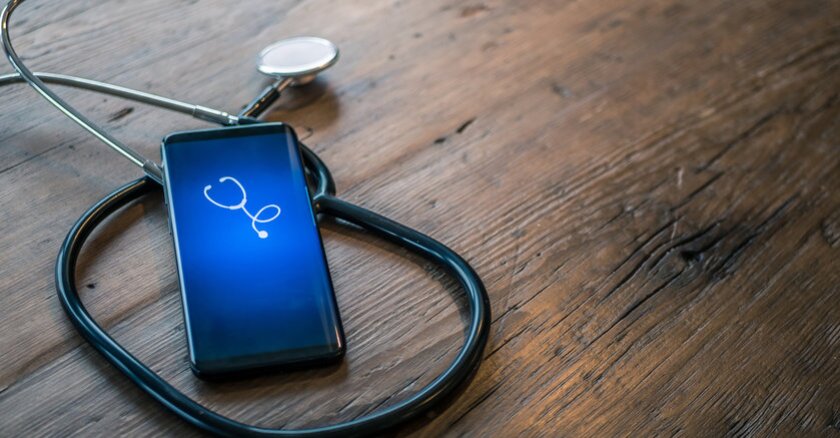“The FCC is focusing on Internet service to homes and other locations in the community that lack Internet for remote learning,” says Debra Kriete, South Dakota’s coordinator for the federal E-rate program, which funds telecommunication and Internet services for schools and libraries. “ECF gives schools a 100 percent reimbursement of reasonable costs, laptops and portable hot spots.”
Of particular benefit is the fact that schools can use ECF money to build broadband infrastructure if none of the known Internet service providers in a particular region will do it. Kriete says schools can “define the geographic area, estimate the number of students and educators needing to access these networks, and establish bandwidth as well as capacity.”
This massive deployment of remote broadband and laptops, the option to build networks in unserved areas, and telehealth programs already in place at schools have the potential to turbocharge telehealth adoption that has already been on the rise. According to a 2019 report funded in part by the Health Resources and Services Administration (HRSA), school-based health centers (SBHCs) using telehealth grew from 7 percent to 19 percent in 2016-17, reaching over 1 million students in 1,800 U.S. public schools.
TELEHEALTH CAN’T GET TO SCHOOLS FAST ENOUGH
Telehealth is sorely needed, because in many ways, physical and mental health care is lacking in underserved populations. The National Survey of Children’s Health (NSCH), funded and directed by HRSA, documents much of the need.
Children ages 10-17 who lived in small rural areas were more likely to be overweight (19.5 percent) or obese (22.1 percent) relative to children in urban areas (15.1 percent and 14.6 percent, respectively). At the same time, the report includes more positive rural health metrics. Children ages 10-17 in small rural areas were more likely to meet the recommended 60 minutes of daily physical activity compared to urban children, at 25.8 percent versus 18.9 percent.
There are also causes for concern about access to mental health care. On the National Institute of Mental Health (NIMH) website, Director Joshua Gordon wrote that “Black people and individuals in other racial and ethnic minority groups have historically had relatively low rates of suicide. But this has been changing recently. As of 2018, suicide became the second leading cause of death in Black children aged 10-14, and the third leading cause of death in Black adolescents aged 15-19.” More specifically, a recent study in the Journal of Community Health showed that suicide rates among Black girls aged 13-19 nearly doubled from 2001 to 2017. For Black boys in the same age group, over the same period, rates rose by 60 percent.
A TELEHEALTH PIONEER
More than 10 years ago, Sevier County School System in Tennessee faced a serious challenge — how to stop the spread of communicable illnesses that resulted in school closings.
“In some winters, the flu could affect as many as 20 percent of 14,000 students, causing entire schools to shut down in an effort to slow the spread of the flu,” explained Don Best, the district’s health coordinator.
In 2009, the school district turned to telemedicine. The schools started using video conferencing hookups and USB-compatible devices for quick exams and recording vital signs, and a telehealth platform from AMD Global Telemedicine.
To accomplish this, the district partnered with Cherokee Health, a large nonprofit health-care system in the area, which covered a third of the cost of the equipment, while grant funding covered the remaining two-thirds. The county has a nurse at every school to team with either a pediatric nurse practitioner or a family health nurse practitioner at Cherokee Health.
“The pandemic set us back for the last 18 months, as most of the students were sent home,” says Chief Operating Officer Dr. Suzanne Bailey at Cherokee Health Systems. “As things continue to open up, we will continue to expand our school programs, as well as partner with public housing nonprofits across the state.”
During a telemedicine visit, a child can be screened, monitored, examined, diagnosed and treated for everything from ear infections to strep throat to obesity. They use video conferencing and USB-compatible devices for quick exams and recording vital signs.
In addition to students and faculty, the school district expanded telehealth services to parents, who are now useful allies in promoting the program. Patients’ ongoing issues such as high blood pressure, diabetes and nutrition can now be tracked and monitored.
$122 BILLION WILD CARD IN THE SCHOOL DECK
While the media and webinars have given a lot of attention to the ECF and the FCC, another huge pot of cash has arguably gotten less attention — the ARP ESSER. A part of the American Rescue Plan (ARP) Act of 2021, it’s a $122 billion grant fund for just about anything that schools may need or want.
These grants are available to all school districts, which have broad discretion over how to use them. As framed in the language of the bill, this money is supposed to help schools reopen after COVID-19.
“I think school districts can definitely make the case that, in order for them to safely reopen, districts need to have options for robust telehealth solutions in place,” said Evan Shea, manager of policy and strategic partnerships at the technology firm EducationSuperHighway. “If a student gets sick, they would be able to learn from home, and also receive the benefits of health care.”
Even with this much money, there are fewer strings attached and a longer funding horizon. The ECF runs through the end of June 2022, while ESSER funds are available through September 2023. This is actually the third iteration of this particular fund since the pandemic started.
For public health officials and advocates, broadband builders and community leaders, this level of spending isn’t likely to come around again soon. Will stakeholders use this money to significantly reduce the health-care gap?
Editor's note: This story has been updated to include information about Sevier County School System's service for parents and a statement from the COO of Cherokee Health Systems.








